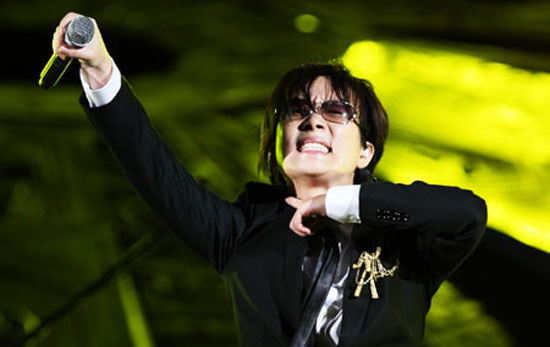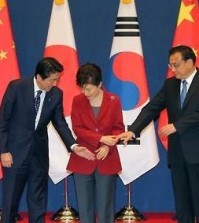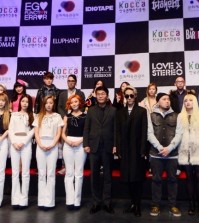- California Assembly OKs highest minimum wage in nation
- S. Korea unveils first graphic cigarette warnings
- US joins with South Korea, Japan in bid to deter North Korea
- LPGA golfer Chun In-gee finally back in action
- S. Korea won’t be top seed in final World Cup qualification round
- US men’s soccer misses 2nd straight Olympics
- US back on track in qualifying with 4-0 win over Guatemala
- High-intensity workout injuries spawn cottage industry
- CDC expands range of Zika mosquitoes into parts of Northeast
- Who knew? ‘The Walking Dead’ is helping families connect
Roots of K-pop
From ‘Hymn of Death’ to ‘Gangnam Style,’ Korean music galloping forward
By Park Si-soo
Everything has its roots and humble beginnings of its own. K-pop is no exception.
While today’s genre is characterized by pretty young boy and girl bands with slick dance routines and computer-assisted catchy tunes, its primitive form nearly nine decades ago was nowhere near any sort of attention-grabbing fanciness.
Back then, the out-dated combinations of black and white traditional costume or “hanbok” was considered the sole “uniform” for singers, with which they solemnly crooned melancholy songs on creaking wooden stages under dim lighting.
They normally confronted another harsh reality after the show: social stigma. In a society affected by Confucianism for generations, entertainment was considered an inferior profession so that its practitioners were belittled with the derogatory nickname “tantara.”
In fact, such discrimination still prevails among the older generation. But it’s not the case with the younger generation, as seen in a survey of primary and secondary students by the Korea Institute for Vocational Education and Training late last year that entertainer is one of their primary choices for a future job.
The following history of K-pop was written based on CJ E&M’s recent publication on “100 K-pop legends.”
Born in 1926
It’s a dominant view that the history of modern K-pop started in 1926 with “Hymn of Death,” sung by Yoon Sim-duk. It was the title song of her debut album released in August of that year. This is also known as the first Korean pop song released in Japan. The song talks about one’s agony over “unrealizable” love.
Experts believe the song was written based on the love story of Yoon herself. In fact, the singer was seeing Kim Woo-jin, a married play writer, at the time of the debut. Depressed by their destiny, the two jointly jumped to their death from a ferry en route to Japan on Aug. 4, 1926, three days after her album was released. Their suicide made headlines, drawing massive attention to her album, especially its title song.
In the early stages of K-pop, melancholy songs dominated the local music scene, a result of Japan’s colonial rule on the Korean Peninsula between 1910 and 1945. Lee Nan-young and Nam In-soo earned fame with songs portraying the deep-seated grief of ordinary citizens. In particular, Lee’s “Tears of Mokpo,” released in 1935, is currently recognized for setting the standard of the Korean form of trot music in terms of rhythm, tempo, vocal technique and other musical elements.
No one would dispute that Lee Mi-ja was the first K-pop diva. Making her debut in 1959, she leaped to stardom in 1964 with “Camellia Lady.” More than 100,000 copies of the album containing the song were sold, the equivalent of two million today considering the size of the K-pop market, making her a musical “legend.”
Lee placed her name in the Guinness Book of World Records in 1991 as the most prolific Korean singer ㅡ a staggering 2,069 songs on 569 albums.
Wind of change
The Korean pop music scene represented by humbly dressed musicians faced a major challenge in fashion in the 1960s. The change started with Yoon Bok-hee. People were shocked with photos of her disembarkation from a plane in the United States wearing a figure-hugging mini skirt on Jan. 6, 1967.
Adding to the surprise was Han Dae-soo, a hippie-inspired rocker with long hair from the U.S., who made his debut in 1974. Prior to the debut, the University of New Hampshire dropout once served as a journalist at The Korea Herald.
Huge criticism fell on them for challenging musical conventionality. But they endured, making themselves an icon of liberation.
Shin Jung-hyeon is said to have imbued K-pop with “rock spirit.” Making his debut in 1964 with “Woman in the Rain,” he led Korean psychedelic rock culture during 1960s and ‘70s, earning the nickname “Godfather of Korean Rock.”
In December 2009, Shin became the first Asian musician and the sixth in the world to be the recipient of the Fender Custom Shop Tribute Series guitar, joining five other such rock legends ㅡ Eric Clapton, Jeff Beck, Eddie Van Halen, Yngwie Malmsteen and Stevie Ray Vaughan. His two sons ㅡ Shin Dae-cheol and Yun-cheol ㅡ are also respected rock guitarists.
It’s hard to talk of K-pop in the 1970s without Cho Yong-pil. He rose to instant stardom in 1972 with his debut song “Return to Busan Port.” His debut album became the country’s first million-seller, laying the ground for him to be called the “King of Singers.” Cho, who turned 63, is still an active musician, whose latest song “Bounce” swept domestic music charts upon its release in April despite the challenge from idol stars.
Renaissance of K-pop
It’s not an exaggeration to say that K-pop showed “dramatic” growth in the 1990s. People’s spending on music skyrocketed on the back of economic development, laying the ground to bring young and talented singer aspirants into the market, including Kim Gun-mo, Shin Seung-hun and Seo Tai-ji.
“Unlike today, it was easy to see a million-selling album,” Shin recollected in a recent TV show. He is known to have sold more than 20 million copies of his albums since his debut in 1991. His biggest rival at that time, Kim Gun-mo, holds the record for biggest selling album in Korea when his third album released in 1995 sold over 3.3 million copies.
Seo Tai-ji shook the landscape of K-pop. His band, Seo Taiji and Boys, became a nationwide cultural sensation with his debut song “I know it” in 1992, a rap song mixed with American hip hop. Seo earned the nickname “President of Culture” for being a huge success with all the albums he produced. The band’s breakup in 1996 sent a violent shockwave to its numerous fans, forcing major TV stations to cover the news in their primetime news shows. Seo returned to the stage in 2002 with a solo album, which was also successful.
Yang Hyun-seok, CEO of YG Entertainment with several idol super stars such as Big Bang and 2NE1, was a member of the band, along with Lee Juno, a professional dancer and music producer.
K-pop started going global a couple of years ago, propelled by systematically trained idol stars. The biggest contribution to K-pop globalization, needless to say, goes down to Psy who took the global music scene by storm in 2012 with “Gangnam Style,” a YouTube hit song that has drawn a whopping 1.8 billion viewers globally.




















DI Cheon
October 31, 2013 at 11:16 AM
Where is Psy? America ? or Korea???
David Schiller
January 7, 2014 at 4:59 PM
In response, may I say that I am a retired professor of music history in the US. Coincidentally, I lived in Korea for two years as a Peace Corps Volunteer, in 1967-69. I would be glad to correspond with anyone who is interested in Korean popular music of the 1970s and earlier. I am especially interested in reconstructing what was being played on AM radio, and also in tea rooms and bars in the late 60s. I agree with the author Park Si-soo, that the roots of K-pop are worthy of further study, and also that the artists of that time were exceptionally talented. I think it will be OK for me to give my full name (David Schiller) and my professional affiliation (Emeritus, UGA Hugh Hodgson School of Music) for this purpose.